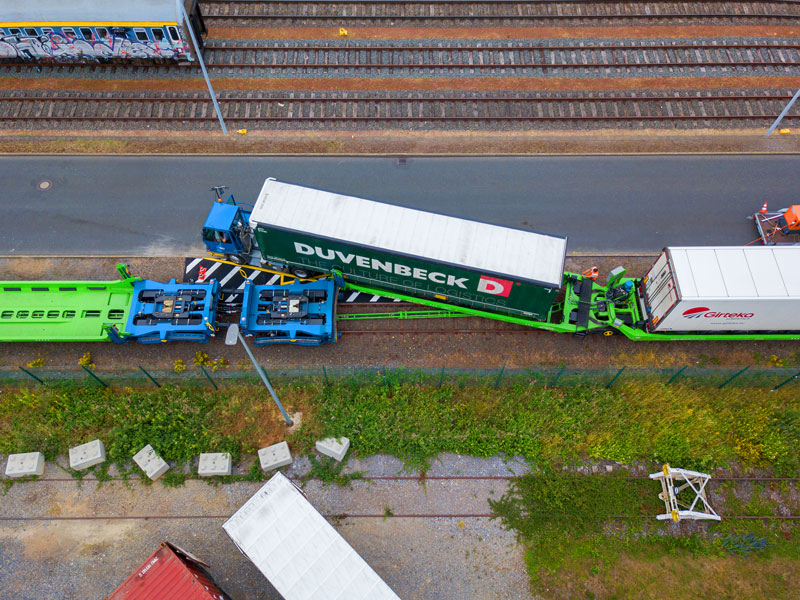YT-EVs support Helrom in reducing carbon emissions


The modal shift from road to rail can help reduce carbon emissions. This is particularly relevant in countries such as Germany where railways mostly operate using green electricity. However, the stumbling block is transferring semitrailers to and from rail wagons. One option is to use cranes, but that requires special craneable trailers. Another option is the use of special terminals. However, the construction of such terminals requires considerable investment, years of construction time and future route planning is inflexible in terms of location.
Helrom solves these challenges. The company uses an innovative and worldwide patented trailer wagon with a pivoting ramp. This means shunter tractors can quickly load semi-trailers on and off the wagons. One key advantage of the Helrom system is that it works with all types of semi-trailers and needs no special infrastructure, just level ground along the railway track.
The company is currently using this system for transporting thousands of semitrailers every year between Vienna and Düsseldorf. In the past three years this route has taken more than 16,000 semitrailers off the road, preventing more than 10,000 tonnes of CO2 emissions. To further reduce carbon emissions Helrom use YT203-EV tractors. Christian Schindler, Senior Manager Trailer Hubs & Dangerous Goods Officer “We have had a good customer relationship with Terberg for many years. By switching to electric terminal tractors, we can continue on this path to the Net Zero Economy together. We also owe it to the environment.”
Helrom ordered six YT203-EVs, two of which are already operating at the Düsseldorf terminal. The vehicles are serviced by TSF’s specialist electric vehicle technicians. TSF is proud to be working in strong partnerships with
innovative companies such as Helrom to implement the Net Zero goals.
